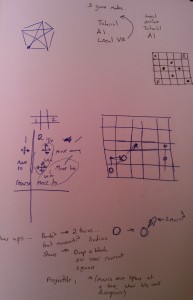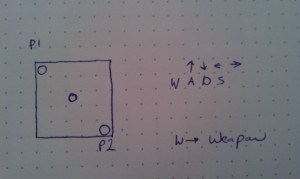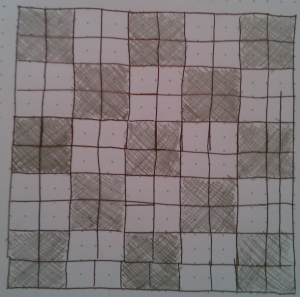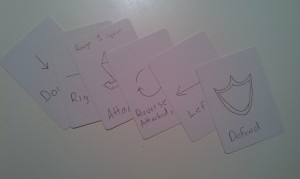Learning component
One of the projects assigned in Moses Wolfenstein’s class on Games and learning was to create an educational game. Because bots! already had a, limited, coding component I decided to use the assignment as an opportunity to work on my game. At the beginning there seemed to be several ways I could expand my game so that it could teach players coding. I had already done taken a similar approach on the project Tangibe Turtle but I wanted to try something different this time around. Influenced by the Code Hero project I tried to think of ways to make the coding aspect more explicit in Bots!. For a while, I thought of actually putting a command line into Bots! until i realized how lame it could potentially be, especially if mavis beacon didn’t teach you tying. I then thought about allowing the player to create custom action blocks by stringing simple commands together (for example, making a dash attack by combining moving and attacking). I didn’t entertain this idea for very long because I realized that balancing such a game would be a nightmare. Since I actually wanted to finish this project, I decided not to pursue this.
At this point I was a bit upset about trying to make the coding aspects of Bots! transferable to a formal setting. I then realized that it was because the core experience that I wanted to convey didn’t fit with teaching people to code. What it did fit with was making agents do cool things as they battled to the death. I was in luck, the core experience I wanted actually fit with another part of the game I wanted to develop.





